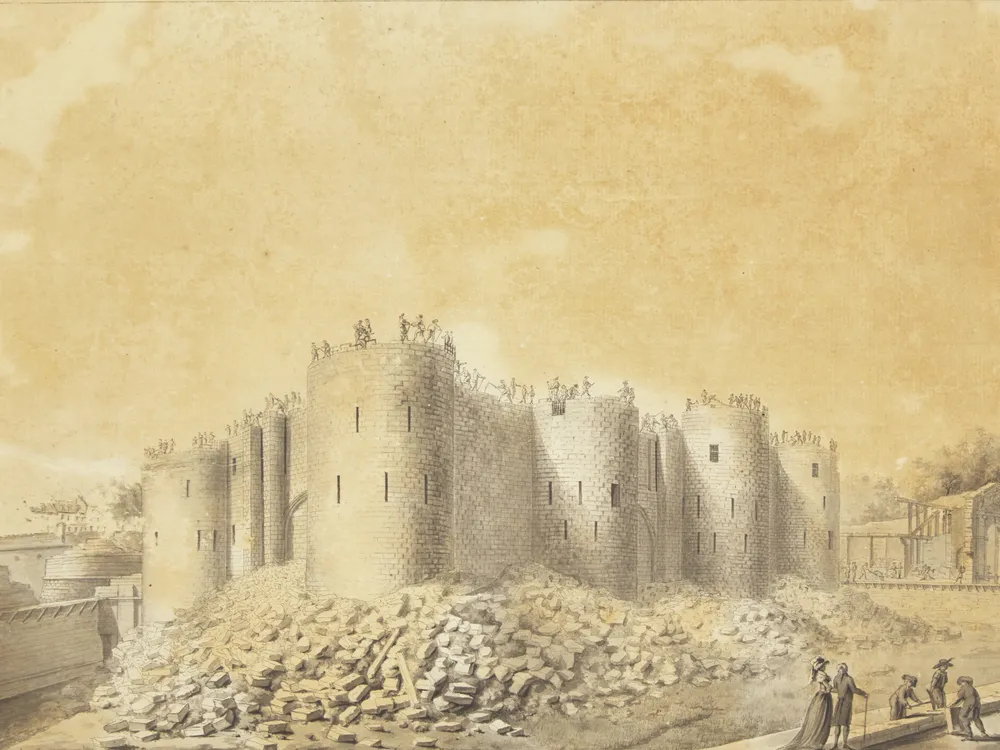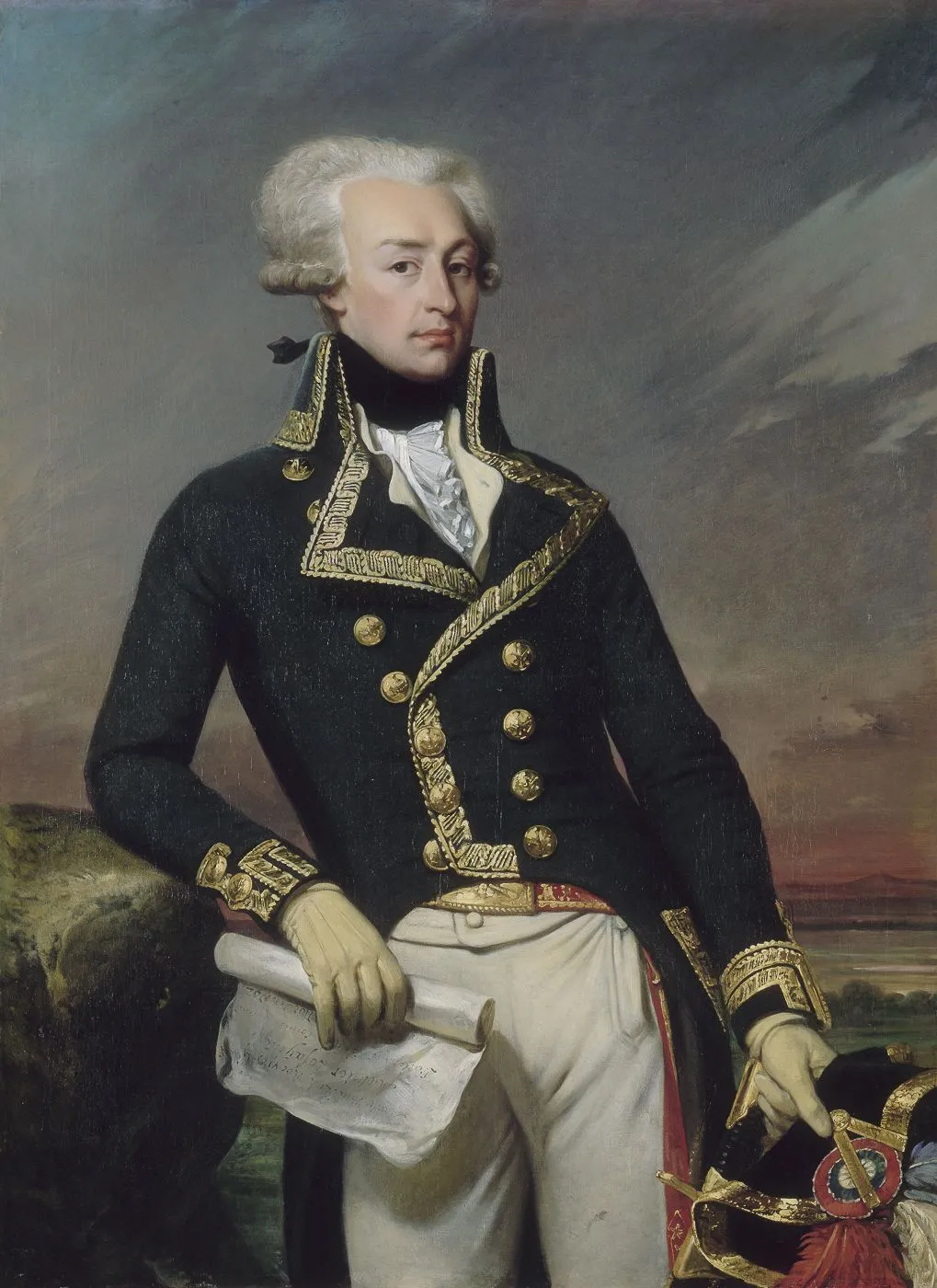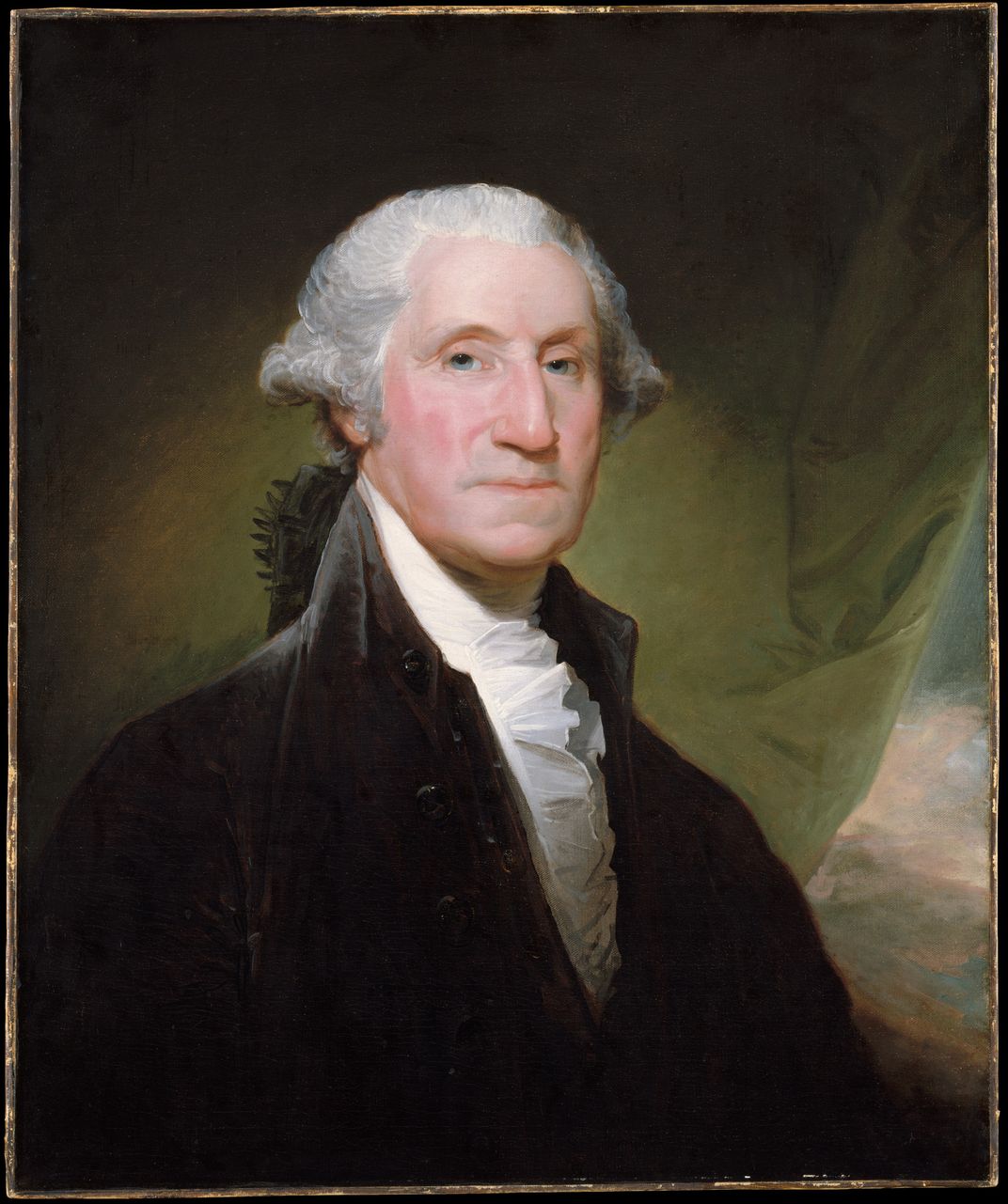Drawing of the Bastille Cherished by George Washington Goes to Auction
The artwork was a gift from the Marquis de Lafayette, who also included the fortress’ key

One of George Washington’s prized possessions was an ink-wash drawing of the Bastille, the Parisian prison stormed by French revolutionaries in 1789. He mounted it in the entryway of his Mount Vernon home, right next to the medieval fortress’ spindly key. Both items were gifts from the Marquis de Lafayette, the Frenchman who’d helped lead the colonists to victory during the American Revolution.
Now, that drawing—titled The Destruction of the Bastille—is heading to the auction block. Freeman’s | Hindman will sell the artwork in Philadelphia next month, and it’s expected to fetch between $500,000 and $800,000, according to a statement from the auction house. In the meantime, the piece is touring through Paris, New York, Chicago and Philadelphia’s own Museum of the American Revolution.
James Taub, associate curator of exhibition content and research at the Philadelphia museum, is glad to be able to display the drawing ahead of the upcoming 250th anniversary of the country’s founding.
“It is another great opportunity to show the long-lasting impacts of not only the American Revolution, but revolutionary movements around the world,” he tells the Philadelphia Inquirer’s Rosa Cartagena.

Located on Paris’ east side, the Bastille was a towering medieval fortress that once housed prisoners and continued to act as “a symbol of arbitrary royal power” in the eyes of working-class French people, as Jeremy D. Popkin of Humanities magazine wrote in 2021. On July 14, 1789, hundreds of French revolutionaries attacked and took over the Bastille, catalyzing the French Revolution.
The Destruction of the Bastille was drawn by Étienne-Louis-Denis Cathala, an architect who oversaw the Bastille’s demolition after the events of July 1789. At the time, Lafayette was responsible for maintaining order in Paris as the commander-in-chief of the Paris National Guard. He sent the drawing across the Atlantic to his own former commander: George Washington, who had become America’s first president not long before.
“Washington treated Lafayette like a son; Lafayette was 19 when they met,” Darren Winston, co-curator of books and manuscripts at the auction house, tells Penta’s Lauren Peacock. “Lafayette looked at him as a father figure and they agreed politically as well as every other way.”

Lafayette explained the gift in an accompanying letter:
Give me leave, my dear general, to present you with a picture of the Bastille just as it looked a few days after I had ordered its demolition, with the main [key] of that fortress of despotism—it is a tribute which I owe as a son to my adoptive father, as an aid de camp to my general, as a missionary of liberty to its patriarch.
Washington treasured the drawing and key, calling them symbols of “victory by liberty over despotism.” He kept them for the rest of his life and displayed them in his home as mementos of “his relationship to Lafayette, his commitment to justice and liberty and its meaning for America,” per the auction house.
As WHYY’s Peter Crimmins writes, the drawing is “not particularly arresting.” It’s a yellowed, washed sketch depicting the Bastille being peacefully dismantled, with onlookers watching from the foreground.
“With no story, I see it in an antique shop for $250,” Winston tells WHYY. “It is absolutely the vessel by which the story comes. It’s all about the story.”

